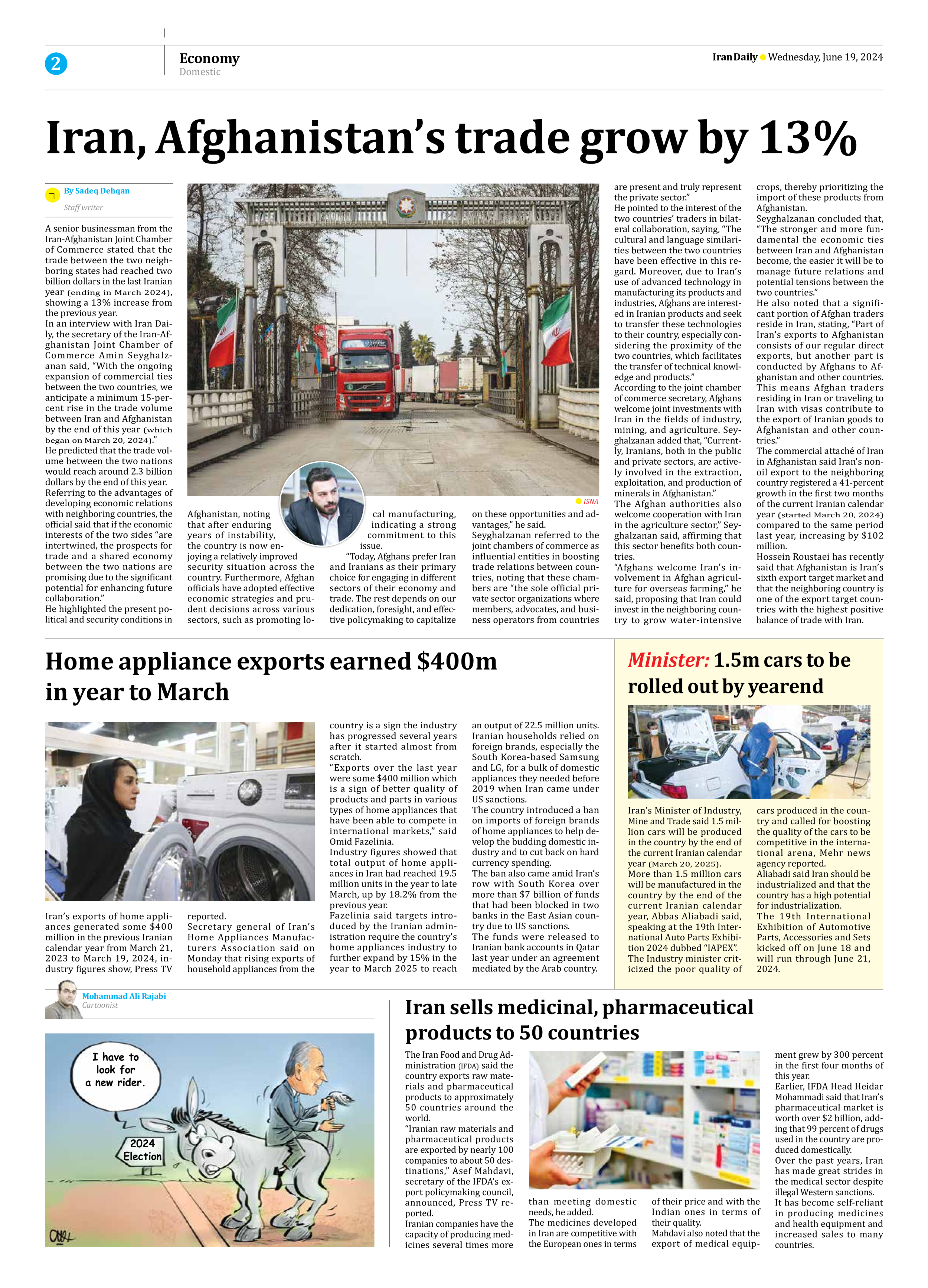
Copy in clipboard...
Iran, Afghanistan’s trade grow by 13%
In an interview with Iran Daily, the secretary of the Iran-Afghanistan Joint Chamber of Commerce Amin Seyghalzanan said, “With the ongoing expansion of commercial ties between the two countries, we anticipate a minimum 15-percent rise in the trade volume between Iran and Afghanistan by the end of this year (which began on March 20, 2024).”
He predicted that the trade volume between the two nations would reach around 2.3 billion dollars by the end of this year.
Referring to the advantages of developing economic relations with neighboring countries, the official said that if the economic interests of the two sides “are intertwined, the prospects for trade and a shared economy between the two nations are promising due to the significant potential for enhancing future collaboration.”
He highlighted the present political and security conditions in Afghanistan, noting that after enduring years of instability, the country is now enjoying a relatively improved security situation across the country. Furthermore, Afghan officials have adopted effective economic strategies and prudent decisions across various sectors, such as promoting local manufacturing, indicating a strong commitment to this
issue.
“Today, Afghans prefer Iran and Iranians as their primary choice for engaging in different sectors of their economy and trade. The rest depends on our dedication, foresight, and effective policymaking to capitalize on these opportunities and advantages,” he said.
Seyghalzanan referred to the joint chambers of commerce as influential entities in boosting trade relations between countries, noting that these chambers are “the sole official private sector organizations where members, advocates, and business operators from countries are present and truly represent the private sector.”
He pointed to the interest of the two countries’ traders in bilateral collaboration, saying, “The cultural and language similarities between the two countries have been effective in this regard. Moreover, due to Iran’s use of advanced technology in manufacturing its products and industries, Afghans are interested in Iranian products and seek to transfer these technologies to their country, especially considering the proximity of the two countries, which facilitates the transfer of technical knowledge and products.”
According to the joint chamber of commerce secretary, Afghans welcome joint investments with Iran in the fields of industry, mining, and agriculture. Seyghalzanan added that, “Currently, Iranians, both in the public and private sectors, are actively involved in the extraction, exploitation, and production of minerals in Afghanistan.”
The Afghan authorities also welcome cooperation with Iran in the agriculture sector,” Seyghalzanan said, affirming that this sector benefits both countries.
“Afghans welcome Iran’s involvement in Afghan agriculture for overseas farming,” he said, proposing that Iran could invest in the neighboring country to grow water-intensive crops, thereby prioritizing the import of these products from
Afghanistan.
Seyghalzanan concluded that, “The stronger and more fundamental the economic ties between Iran and Afghanistan become, the easier it will be to manage future relations and potential tensions between the two countries.”
He also noted that a significant portion of Afghan traders reside in Iran, stating, “Part of Iran’s exports to Afghanistan consists of our regular direct exports, but another part is conducted by Afghans to Afghanistan and other countries. This means Afghan traders residing in Iran or traveling to Iran with visas contribute to the export of Iranian goods to Afghanistan and other countries.”
The commercial attaché of Iran in Afghanistan said Iran’s non-oil export to the neighboring country registered a 41-percent growth in the first two months of the current Iranian calendar year (started March 20, 2024) compared to the same period last year, increasing by $102 million.
Hossein Roustaei has recently said that Afghanistan is Iran’s sixth export target market and that the neighboring country is one of the export target countries with the highest positive balance of trade with Iran.







